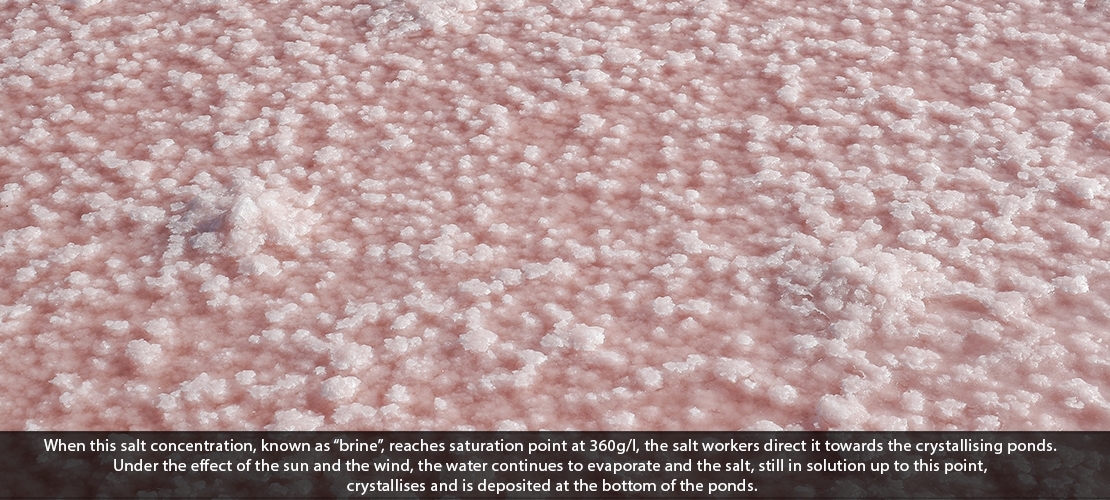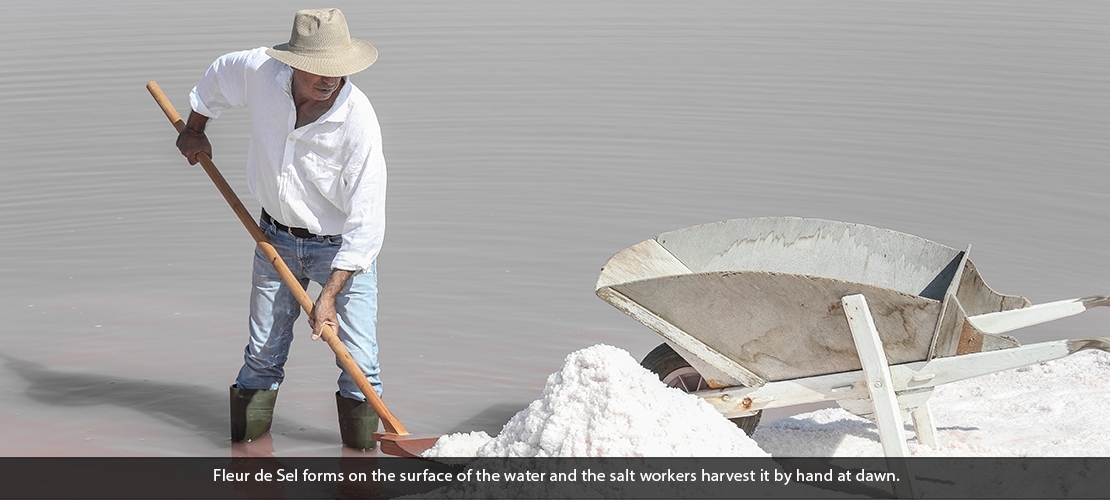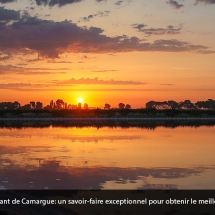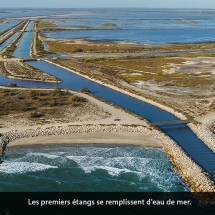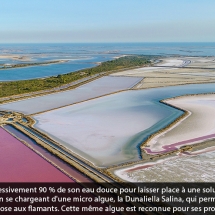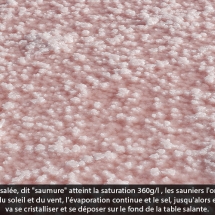Salt harvesting
Sea salt is created through the circulation of sea water over large areas known as salt marshes or salt flats. Under the combined action of two renewable forms of energy, the sun and the wind, the water evaporates naturally, and its salt concentration gradually increases to a point of supersaturation. At this stage, the salt is deposited and harvested by man.
The first ponds are filled with sea water.
From March to August, the salt workers help the sea water to circulate from pond to pond to increase its natural salt concentration. The water evaporates gradually through the action of the sun and the wind. The sea water gradually loses 90 % of its fresh water to leave a solution with a high salt concentration. The water changes colour as it accumulates a quantity of a micro algae, Dunaliella Salina, which feed the prawns and give flamingos their pink colour. These algae are also known for their cosmetic properties.
When this salt concentration, known as “brine”, reaches saturation point at 360g/l, the salt workers direct it towards the crystallising ponds. Under the effect of the sun and the wind, the water continues to evaporate and the salt, still in solution up to this point, crystallises and is deposited at the bottom of the ponds.
After several months of crystallisation, a layer of salt ten centimetres thick, known as a “salt cake”, forms at the bottom of the ponds. This thick layer of naturally white salt is then harvested in September.
The salt is then sold as coarse or ground to become fine salt.
Fleur de Sel forms on the surface of the water and the salt workers harvest it by hand at dawn.






